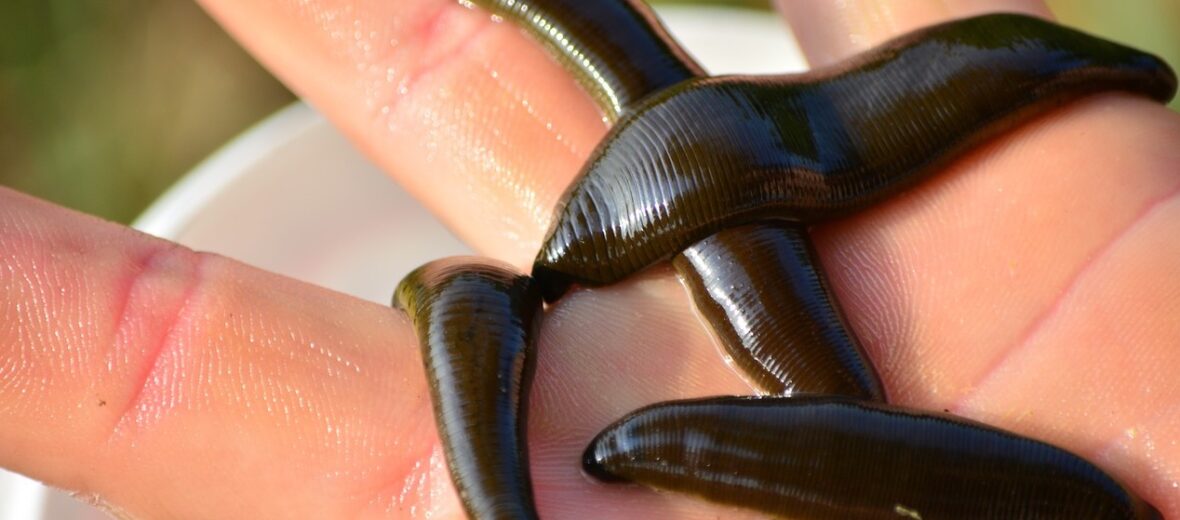
Now I’m not referring to lawyers, I’m talking about the blood sucking worm-like creatures. The leech is found all over the world, sans the Arctic and Antarctica, usually in stagnant or vernal pools. They feast on blood meals and can get quite large doing so; especially the ones from the Amazon.
First the Stats…
Scientific name: Hirudinea
Weight: Up to .17 ounce
Length: Up to 18 inches
Lifespan: Up to 10 years
Now on to the Facts!
1.) The body of a leech is composed of approximately 34 segments.
2.) Leeches have suckers on both ends of their body. One end that assists in movement and the other end that is equipped with 3 sharp teeth.
3.) Most species have 3 jaws for tearing into flesh in order to feast!
4.) A leech has 32 brains!
5.) While most leeches consume a blood meal, there are some that prey on water insects and others that feast on decaying plant matter.
But wait, there’s more on the leech!
6.) They consume up to 5 times their body weight in blood! Once they have gotten their fill of a blood meal, they will detach and rest.
7.) These critters produce an anesthetic which reduces or eliminates the pain of their bite and allows undisturbed withdrawing of blood. They also, release an anticoagulant, called hirudin, which prevents blood from coagulating.
Did you know…?
Both the anticoagulants and anesthetics produced by leeches are used in today’s medicine for the production of pain medication and blood thinning drugs.
8.) Leeches are hermaphrodites (they have both male and female reproductive organs).
9.) A leech can survive up to a year without a meal. This is an adaptation that has derived from a low food source environment.
10.) The leech is parthenogenetic. It doesn’t need a partner to reproduce.
Now a Short Leech Video!
Also, check out the Critter Science YouTube channel. Videos added frequently!
Want to suggest a critter for me to write about? Let me know here.



